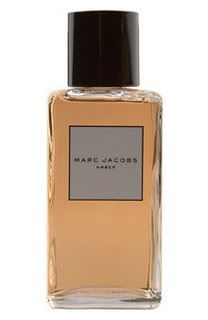.jpg) Being a purveyor of fine essences through his and his ex-wife's company Aqua Oleum, Alec Lawless was in close proximity with good materials for quite a long time. At some point he decided to blend his own scents for sheer pleasure more than their aromatherapy value (and who can blame him, it's ever so inviting to mix those delectable materials!) and, what have you, he seems like he knows a bit or two about the art. Alec uses his own copyrighted "system" of describing and differentiating between notes, baptizing them Heart (the main idea, the "family" classification if you please), Nuance (the character of the composition, the central cord) and Intrigue (the accessory notes that pique your interest and provide the desire to explore further, top notes and nosegays, so to speak).
Being a purveyor of fine essences through his and his ex-wife's company Aqua Oleum, Alec Lawless was in close proximity with good materials for quite a long time. At some point he decided to blend his own scents for sheer pleasure more than their aromatherapy value (and who can blame him, it's ever so inviting to mix those delectable materials!) and, what have you, he seems like he knows a bit or two about the art. Alec uses his own copyrighted "system" of describing and differentiating between notes, baptizing them Heart (the main idea, the "family" classification if you please), Nuance (the character of the composition, the central cord) and Intrigue (the accessory notes that pique your interest and provide the desire to explore further, top notes and nosegays, so to speak).The line currently includes 10 fragrances made from naturals with only about 1% of synthetics*, of which I am reviewing 5 today (you will find a link for more reviews of the rest on Scenthive at the bottom)
White Blooms
Heart: delicate white floral
Nuance: soft green balsam
Intrigue: warm woody.
If you have never smelled real essences from flowers you're missing on a whole brave world: the essences vibrate with a Kirlian aura, emitting their life-force on paper, on skin, wherever. Those dregs in perfume bottles that pass as floral fragrances these days do not possess even one iota of that kind of vibracy. White Blooms is expectedly an orgy of lovely flowers, of which orange blossoms, jasmine and the sweet honeyed mantle of beeswax comprise the very core. It's awfully pretty ~without being all "demure" like so many office scents are~ and it is positively optimistic: sunny, feminine, ambrosial, wonderful. "White Champac and orange blossoms cover a faint hint of pink lotus and jasmine. Delicacy is maintained by using absolutes of hay and beeswax to impart soft warm green notes, which are, in turn supported by a base of sandalwood, frankincense and a light vanilla courtesy of benzoin resin".
Amber
Heart: masculine floral
Nuance: balsamic incense
Intrigue: herbs and spice.
Let it be said that I am not an "amber person". I mentally picture those people ooohing and aaahing over the densest of amber fragrances as big, "wooly" personalities with terrific social skills, engulfing hugs and always a virtual pattisserie of things to offer in the remisses of their cupboards. Although I don't stand small myself, I am certainly none of the above and my house-warming gestures usually involve on-the-spot preparing of little amuse-bouche (Better not shop for sweet things if no-one is scheduled to appear on my doorstep I tell you!). Having said that, most ambers usually strike me as pleasant on the one hand, but too embulient, too "expressive", too sweet somehow; and usually they scare the hell out of me with their gigantic sillage-d tentacles! To its credit this Amber follows the prime example of Lutensian vision and adds a fat dollop of herbal and spicy elements that manage to give a culinary aspect (the housewarming bit of something roasting in the background) while it simultaneously gives a lightly cool aspect through frankincense and melancholic myrrh (essences I am especially drawn to). It makes me feel comfortable without having that heavy, petting aunt with the auburn curly hair insisting I tell her "all about my classmates and my boyfriends" and I can finally relax... "Subtle hints of spice, mint, caraway and thyme evolve on the skin to reveal a floral heart of jasmine, lavender, rose and clary sage. The base is provided by labdanum, frankincense, sandalwood and myrrh with hints of vanilla and patchouli".
Trade Wind
Heart: cool sea
Nuance: warm earth
Intrigue: warm wind.
There's nothing more difficult than creating a "marine" or "ozonic" fragrance with natural materials. I believe it's nigh impossible because that family strongly depends on the popularised synthetics of the 90s. Trade Wind manages to just skim Charybdis, by opting to borrow the warmer elements of earth with its rooty aroma (very discernible vetiver and woods) and folding them into saltier things (seaweed compliments vetiver well, both sharing a salty nuance). The result is not exactly a marine and it's not screechily persistent and piercing like most marines are, which is a good thing. "Seaweed absolute with mint and violet leaf conjure up the ocean whilst galbanum resin, sandalwood, and vetivert hint at the soft warm earth. Carried in the breeze are faint impressions of orange flowers, linden blossoms, hay and nutmeg
Souk
Heart: Precious woods
Nuance: rose and spice
Intrigue: Incense.
No prizes for guessing this is a Middle-East and India-inspired fragrance: the very elements comprising it, from rose to incense to spice, suggest the East and its bazaarss. Perhaps because it's such a traditional concept or because Lutens has spoiled me rotten with his own mirage of Felix Arabia with dried fruits and dirty armpits I wasn't impressed as much. "The haunting smells of the spice markets, the Arab love affair with the rose, fragrant gardens, precious woods, resins and incense. Sandalwood, frankincense and Cedar of Lebanon are blended with balsams to provide a complex woody heart. Rose Maroc, jasmine, orris and neroli bring floral tributes from surrounding lands. Citrus fruits, herbs and oriental spices bring nuance from the market stalls and the ancient mysterious opoponax suggests incense with help from frankincense and sandalwood".
.jpg) Tangos
TangosHeart: violet leaf, tobacco
Nuance: Jasmine, rose
Intrigue: guaiacwood.
"Needs to be worn by a dark haired woman day or night if you have the confidence" is how Tangos is presented on the site. The thing practically beckoned me, calling my name. Dark hair, check. Confidence, check. Day or night wearing, check (I wear whatever whenever). Finding out it was originally made for a friend from Argentina based upon her choices of aromatics was titillating. The reality is it smells of many things that amalgamate into a musky, rose-tobacco mix with prominent florals in the framing. There is a bitter and also a sweet element antagonising each other and I feel like it should have been a little more feathered out so as to let the essences project more clearly ~this happens after a couple of hours on skin, I'd love it to be so from the start. "A deep green sultry forest (oak moss, violet leaf, vetivert Bourbon and tobacco) slowly releases complex floral bursts (jasmine, ylang, rose Otto, geranium Bourbon, vanilla and rose Maroc) with hints of herb and spice (hay, coriander, tonka bean)."
Please visit Scenthive for more reviews on the fragrances by Essentially Me.
I have a set of all the fragrances (minus the quantity I tried) for giving away to a lucky reader!
*Disclaimer on account of Essentially-Me.co.uk: "Synthetic fragrance compounds usually have petrochemical-derived ingredients. The ones we use are about 50% petrochemical-derived, with the rest made up of turpentine derivatives (that is, synthetic molecules created from chemically processing alpha-pinene which is extracted from pine trees)”
Body Painting Jack O'Kundalini taking "Jack in the Pulpit" by Geogia O'Keefe as the starting point via livingbrush.com. Tangoing couple via cam.net.uk
In the interests of full disclosure we have been sent samples of the line.
.jpg)
.jpg)
.jpg)









.jpg)



.jpg)







